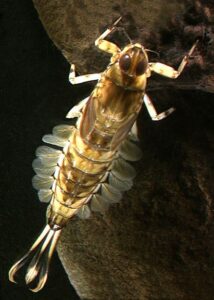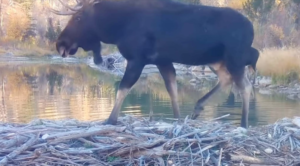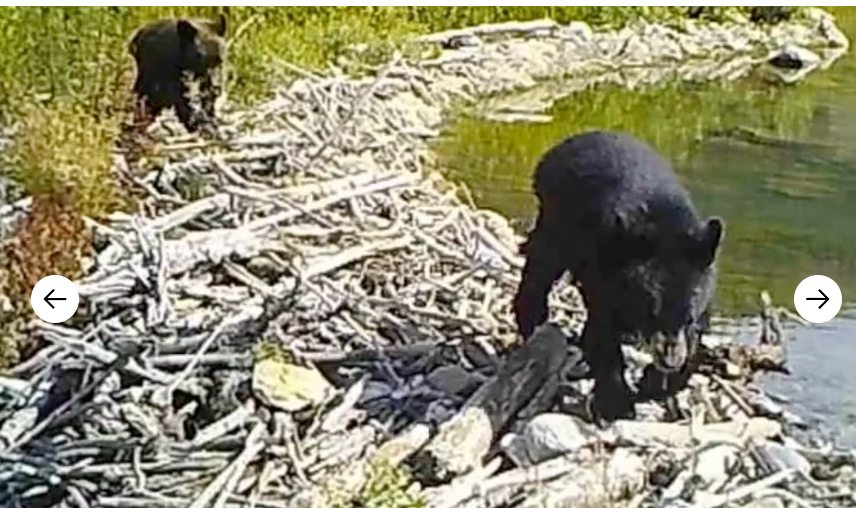Sometimes swe get major information about really tiny players. And the littlest benefits of the beaver trickle down economy. I could only love this paper more if it had a specific sentence at the end saying the obvious.
 Aquatic insects may seem small and insignificant, but they play a crucial role in our economy. Aquatic insects, such as dragonflies and damselflies, are natural allies in agriculture. They help control pests by preying on crop-damaging insects, reducing the need for chemical pesticides. This not only saves farmers’ finances but also promotes environmentally friendly farming practices. Aquatic insects play a crucial role in the ecology of freshwater ecosystems and have significant implications for human economics.
Aquatic insects may seem small and insignificant, but they play a crucial role in our economy. Aquatic insects, such as dragonflies and damselflies, are natural allies in agriculture. They help control pests by preying on crop-damaging insects, reducing the need for chemical pesticides. This not only saves farmers’ finances but also promotes environmentally friendly farming practices. Aquatic insects play a crucial role in the ecology of freshwater ecosystems and have significant implications for human economics.
There are several orders of aquatic insects including springtails, mayflies, stoneflies, alderflies, fish flies, dobsonflies, lacewings, beetles, true bugs (water striders, giater bugs), Hymenoptera-ants and wasps, Diptera- flies and mosquitoes, scorpion flies, Lepidoptera- moths, Trichoptera-caddisflies. These insects are important indicators of water quality and are key components of food webs in aquatic environments. The presence of these aquatic insects in freshwater ecosystems enhances the appeal of recreational activities like fishing and bird watching. Anglers are drawn to areas abundant with aquatic insects because they serve as a natural food source for fish, leading to better fishing experiences. Additionally, the vibrant and diverse world of aquatic insects provides opportunities for nature enthusiasts to explore and appreciate the beauty of these ecosystems.
Hey good points! I bet you can guess what I’m going to say traps organic material and nutrients and increases macroinvertebrates. It;s one of the first things I learned about beavers when I was researching for the subcommittee. Just a quick glance at a recent paper on the topic:
As ecosystem engineers, the construction of dams by beavers alters stream habitat physically and biologically, making them a species of interest for habitat restoration. Beaver-created habitat changes affect a wide range of aquatic invertebrate species.
OOh I know I know call on me!!!
Aquatic insects have some really interesting habits. They have adapted to live in water and have developed unique ways to survive and thrive in their watery environments. For example, during their larval stage, they have specialized adaptations like gills that help them breathe underwater. They also have different ways of moving around, like swimming with their legs or tails, crawling, or even walking on the water’s surface. When it comes to feeding, some aquatic insects are predators, hunting smaller organisms, while others are herbivores, munching on algae or plants.
Reproduction is another fascinating aspect of their habits. Some lay their eggs directly in the water, while others attach them to plants or other surfaces above the water. Many aquatic insects go through distinct life stages, like larvae, pupae, and adults. Each stage serves a specific purpose in their life cycle. They even have various modes of existence as they can be Surface Skaters, Burrowers, Crawlers, and Plank tonic, Divers, Swimmers, Clingers, Sparklers, Climbers, Shredders, Collectors, Scrapers, Piercers, Predators, Chewers, Scavengers, Filterers and Carnivores. Having such an exquisite diversification one can easily understand their importance and significance. In terms of ecology, aquatic insects serve as essential prey for fish and other aquatic organisms, forming the basis of the food chain in rivers, lakes, and streams. Principally, these insects have a significant impact on nutrient cycling, and they contribute to the breakdown and decomposition of organic matter in water bodies.
Certain species of aquatic insects are sensitive to pollution and changes in water quality. Their presence indicates good water quality, while their absence or decline can indicate pollution or ecological disturbances. Aquatic insects, especially those that build structures like caddis flies and mayflies, play a role in shaping and modifying their habitats. They create structures such as cases, burrows, or nets that provide shelter for themselves and other organisms. These structures can also influence water flow, sediment deposition, and overall habitat complexity.
In terms of human economics, aquatic insects provide a wide range of ecosystem services that are essential for human well-being. They play a crucial role in supporting fisheries and aquaculture industries by serving as a food source for fish and other aquatic animals. This contributes to the livelihoods of fishermen and the overall economy of the fishing industry. Additionally, the presence of certain aquatic insects can indicate the health of water bodies, which is important for industries such as agriculture, tourism, and fisheries that rely on clean water. Some aquatic insects also have potential applications in biotechnology and pharmaceuticals, which can contribute to economic growth and development.
Lets take a look at that paper again:
Conclusions
Beaver engineering affects aquatic macroinvertebrate communities in rivers. Lotic reaches often have higher species richness compared to ponded areas, but overall stream biodiversity increases with the addition of ponded habitats. Similarly, lotic reaches may have higher aquatic macroinvertebrate density while beaver ponds have higher biomass, and beaver ponds often contain more predatory aquatic macroinvertebrate species than lotic reaches. However, given that all beaver damming reduces stream energy and creates depositional environments, the biological changes reported were less predictable than might be expected. As beavers continue to recolonize their former ranges, researchers will undoubtedly reveal more about their effects on aquatic macroinvertebrates and cascading effects on ecosystem functioning, providing a glimpse into the former natural state of landscapes and their potential for recovery.
Gee it’s almost like beaver dams make more bugs which make more fish which make more birds which oh well you know how it works….
Thus, these insects have tangible economic implications in terms of food production, water quality management, and various industries. From their role in agriculture and aquaculture to their influence on tourism and their value in research and education, these tiny creatures hold hidden value. Recognizing and appreciating their economic importance can lead to sustainable practices, conservation efforts, and a deeper understanding of the delicate balance of our ecosystems. Chiefly, aquatic insects support water quality management and have potential applications in biotechnology and pharmaceuticals. Consequently, they have a significant and positive impact on both our environment and economy.











































